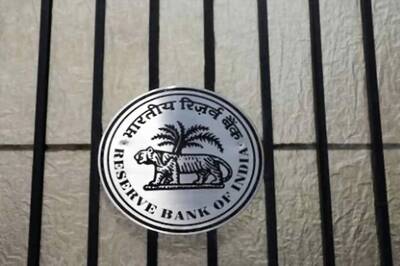
views
Chhath Puja is one of the most important and religious festivals in the Hindu religion. Following the festival of lights and Bhai Dooj, Chhath Puja is celebrated to deify and pray to the Sun. Unlike the major festivals celebrated in India, Chhath Puja is celebrated across a span of four days, and primarily within the boundaries of states of Bihar, Jharkhand, Odisha, West Bengal, and Uttar Pradesh, and in the Madhesh region of Nepal.
Read: Happy Chhath Puja 2021: Images, Wishes, Quotes, Messages and WhatsApp Greetings to Share with Your Loved Ones
Chhath Puja is native to the Indian Sub-continent and has evidence of existence in the ancient Vedas. The festival’s significance in Indian culture is also rooted around Lord Ram and Mata Sita, who offered prayers to the Sun after return from their 14 years of exile to the Kingdom of Ayodhya.

Nahai Khai or Naha Khay
On the first day of Chhath Puja, all the devotees bathe in a water body, especially in River Ganga. Along with cleaning their own body, they also clean their house and surroundings.
Read: Chhath Puja 2021: How To Celebrate the Festival at Home Amid Covid-19
After the bath, prasad is cooked using ingredients like moong-chana dal, pumpkin, and bottle gourd. The women, called ‘Vrattis,’ fast on this day and eat the prasad only once in the day. Other members of the family will eat only after the vratti has eaten the prasad.
Lohanda and Kharna
The second day of the festival marks a full-day fast by the Vrattis. After the sunset, the Vrattis prepare a special prasad called Rasaio-Kheer, eaten to break the fast. On this day, devotees offer their prayers to Chhathi Maiya. At midnight, another special dish called Thekua is prepared, which is used as a prasad while praying to Chhathi Maiya.
Sandhya Arghya
Sandhya, in Hindi, means Evening. Therefore, Sandhya Arghya marks the third day of the festival and involves praying and resting at home. Folk songs are sung at the banks of the water bodies. During the sunset, devotees pray and then return home to enjoy Thekua, the prasad made of jaggery and flour.
On the night of the third day, a canopy made of five sugarcanes, representing five elements of Earth, is used as an integral part of the prayer. The ritual is known as ‘Kosi’ and is mainly followed by a family that has recently witnessed a birth or a wedding.
Usha Arghya
The last day of Chhath Puja involves offering prayers to the Sun, and all the religious rituals are performed during the dawn of the day. The devotees sit near the banks of the water until the sun rises.
As the day breaks, the morning ‘arghya’ is offered by going in the water. The Vrattis break the fast by eating prasad and taking blessings from elders of the family.
This Year, Chhath Puja will be celebrated on November 10.
Read all the Latest Lifestyle News here


















Comments
0 comment